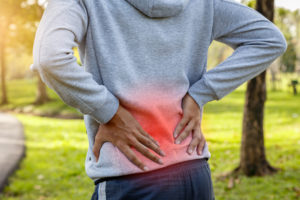
Back pain is one of the most common complaints made by adults. This condition is the leading reason given for days off work and has been for some time. One of the first things that need to occur in the face of back pain is to understand it is not normal. Back pain is not a side effect of aging and is not something you should expect to live with. It may be far easier to treat back pain than you imagine.
Back Pain is Something to Handle, Not Accept
Back pain, leg or arm pain, tingling, numbness, stiffness and limited range of motion can have an enormously negative effect on daily living. To gain an upper hand on pain, it is first necessary to gain understanding. A consultation with a spine specialist can help you identify the source of symptoms. Initially, a doctor will conduct a thorough medical history and consultation in which a trigger for back pain may be identified. Then, a physical exam is typically performed to observe the effect that various movements or manipulations have on worsening or improving discomfort. Finally, diagnostic imaging may be ordered. X-rays, CT scan, ultrasound, and MRI are all efficient at confirming a diagnosis.
Many people live with back pain when they do not have to. Too often, there is an assumption that a visit with a spine specialist will result in a recommendation for surgery. This is a misconception. The reason it is beneficial to undergo a comprehensive evaluation for back pain is that the data gathered by the specialist can inform treatment options. There is typically a process for back pain that includes nonsurgical therapies such as:
- Over-the-counter medication for mild, recurrent back pain.
- Prescription medication to reduce localized inflammation.
- Physical therapy exercises to relieve nerve compression and strengthen the muscles around the spine.
- Rest, combined with strengthening exercises and stretching, promotes healing.
Surgery is considered when back pain originates in some type of spinal injury, such as a collapsed or herniated disc. Even in this situation, nonsurgical therapies are often recommended first.
Stop accepting back pain as a normal part of aging. Call our NYC office at 212-606-1004 to learn more about treatment options that can improve comfort and mobility.


